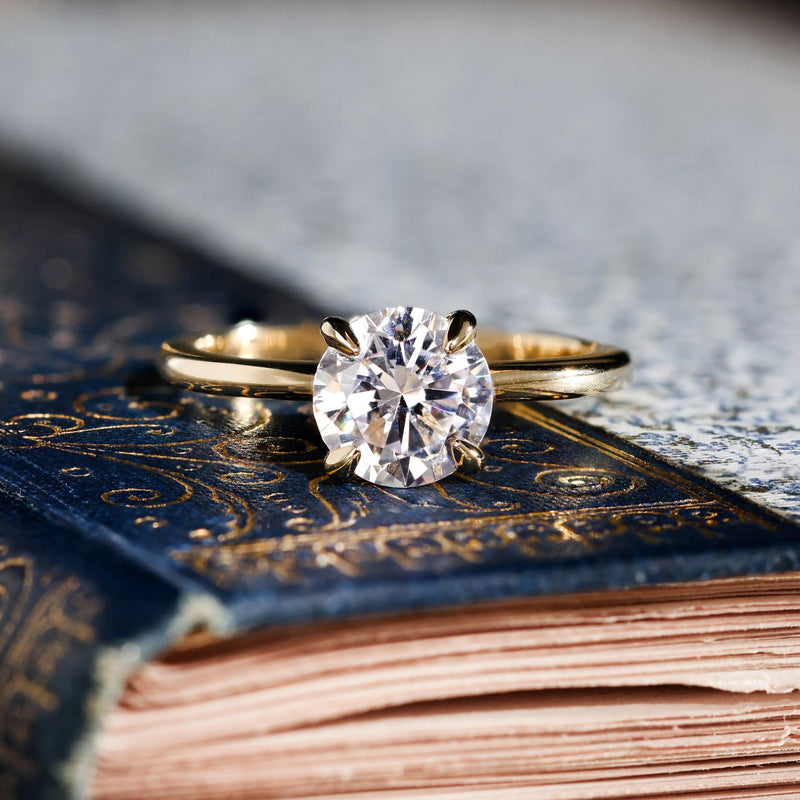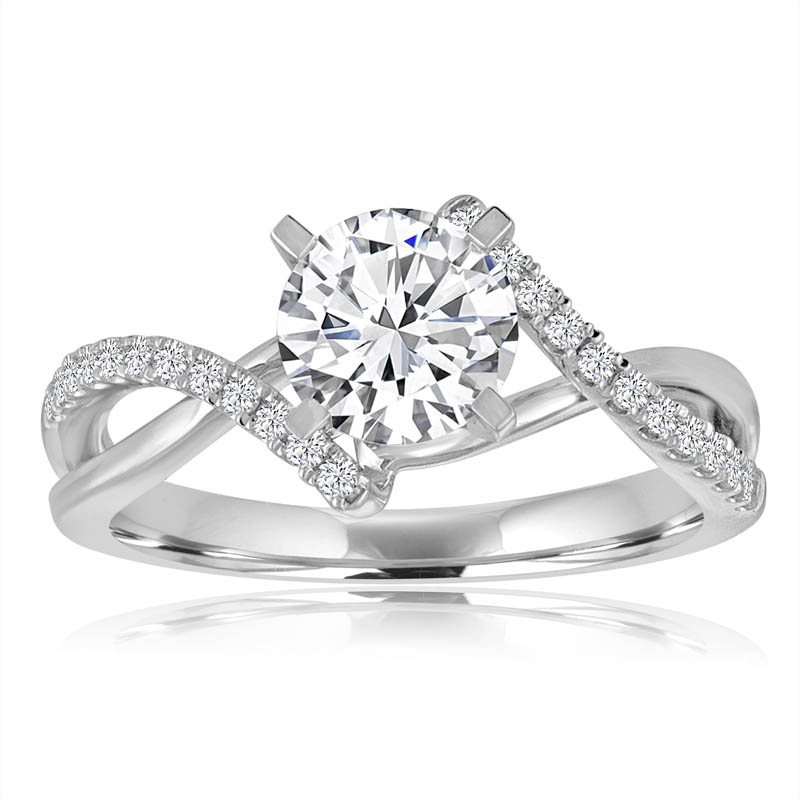lab grown diamond engagement rings and Sustainability: A Match Made in Heaven
Why Laboratory Grown Diamond Engagement Rings Are the Perfect Selection for Eco-Conscious Couples
Lab-grown Diamond engagement rings provide a compelling option for pairs that focus on sustainability. These rubies offer a striking alternative to typical mined rocks, considerably minimizing ecological damage. They are produced utilizing innovative strategies that ensure both top quality and brilliance. As awareness of honest sourcing expands, several couples are reevaluating their options. What ramifications does this change have for the future of the Diamond sector?

The Ecological Influence of Conventional Diamond Mining
Although Diamond mining has actually long been commemorated for its appeal and eminence, the environmental effects of standard mining techniques are increasingly concerning. The removal of diamonds typically involves extensive land disruption, leading to logging and environment loss for numerous species. In addition, the process consumes huge quantities of water, which can deplete regional resources and detrimentally impact surrounding areas. Toxic chemicals utilized in mining procedures can pollute nearby water resources, additionally jeopardizing both human populaces and wild animals.
Moreover, the carbon footprint connected with transporting mined diamonds contributes to the general environmental toll. The heavy equipment and devices needed for mining procedures add considerably to greenhouse gas discharges. As understanding of these issues expands, lots of customers are starting to question the sustainability of typical Diamond sourcing. This shift in viewpoint highlights the immediate requirement for even more eco-friendly alternatives, such as lab-grown rubies, which guarantee to decrease the ecological influence while preserving the appeal and worth of Diamond jewelry.
The Refine of Creating Lab-Grown Diamonds
Lab-grown rubies are produced through 2 key approaches: High Stress Heat (HPHT) and Chemical Vapor Deposition (CVD) The HPHT procedure imitates the all-natural problems under which diamonds create in the Planet's mantle. It entails subjecting carbon to severe pressure and temperature level, leading to the crystallization of carbon atoms right into Diamond frameworks. On the other hand, the CVD method enables the growth of diamonds in a regulated environment. This technique utilizes a gas blend having carbon, which is energized to form plasma, enabling carbon atoms to deposit onto a substratum and expand layer by layer into Diamond crystals.
Both methods produce diamonds that are chemically and physically similar to all-natural diamonds - lab grown diamond engagement rings. The selection of technique often depends upon the preferred qualities and dimension of the last treasure. This ingenious method to Diamond production not just offers a sustainable choice but additionally permits higher transparency in the sourcing of products
Quality and Sparkle of Lab-Grown Diamonds
While many may think that lab-grown rubies differ in quality from their all-natural equivalents, they in fact show comparable brilliance and aesthetic charm. Lab-grown diamonds are created utilizing advanced innovation that replicates the natural problems under which rubies form, leading to stones that have similar physical and chemical residential properties. These diamonds attain the same extraordinary clearness and shade grading as extracted rubies, making them tantamount to the nude eye.
In regards to radiance, lab-grown rubies frequently show exceptional light efficiency as a result of their precision-cut aspects. The strenuous quality assurance throughout production warranties that these diamonds meet high criteria, improving their visual appeal. Furthermore, they are available in a variety of sizes and shapes, permitting pairs to find the perfect ring to match their individual design. Eventually, lab-grown diamonds use a beautiful combination of appeal and high quality, making them an attractive option for interaction rings.
Honest Considerations in the Diamond Market
As consumers come to be significantly familiar with the ethical implications surrounding Diamond sourcing, the discussion around the Diamond sector has actually shifted significantly. Concerns regarding conflict rubies, usually referred to as "blood diamonds," have actually prompted telephone calls for greater openness and responsibility in mining techniques. These diamonds are mined in battle zone and offered to fund armed problem, raising significant moral concerns for customers. Additionally, the ecological impact of traditional Diamond mining has come under examination, with problems such as habitat devastation and water air pollution often highlighted.
In response, several have turned to lab-grown diamonds as an extra honest alternative. These rocks are developed in regulated environments, removing the threats related to mining. Subsequently, lab-grown rubies attract customers seeking to make responsible choices that align with their values. The expanding need for moral practices remains to improve the Diamond market, pressing for sustainable and gentle sourcing techniques.
Cost-Effectiveness of Lab-Grown Diamonds
Lab-grown rubies offer a compelling option for consumers looking for affordable involvement rings - lab grown diamond engagement rings. Valued considerably lower than their natural counterparts, they offer excellent value for cash without compromising high quality or look. This affordability makes lab-grown rubies an eye-catching option for budget-conscious pairs
Lower Price Factor
Lots of couples are finding that opting for lab-grown Diamond engagement rings can considerably lower their total costs without sacrificing quality or elegance. These diamonds typically set you back 30% to 50% less than their mined counterparts, making them an attractive alternative for budget-conscious customers. The cost advantage arises from lower manufacturing expenses and a much more effective supply chain, which gets rid of the costs associated with mining. Consequently, couples can buy larger stones or more complex setups, improving the overall aesthetic of their rings. This cost not only allows for an extra individualized selection however likewise lines up with the worths of eco-conscious pairs who focus on sustainability while continuing to be economically smart. Lab-grown diamonds supply a perfect blend of sophistication and economic situation.
Worth for Money
The cost-effectiveness of you can find out more lab-grown rubies expands past their preliminary price, using outstanding worth for money. Unlike all-natural rubies, lab-grown options can be as much as 40% cheaper while maintaining the same physical and chemical properties. This cost enables couples to spend in bigger or higher-quality stones without visit surpassing their budgets. The resale worth of lab-grown rubies is gradually boosting, making them an extra viable choice for future financial considerations. Additionally, lab-grown rubies typically feature reduced ethical and ecological costs, giving pairs with assurance. By selecting lab-grown rubies, eco-conscious couples not just conserve money yet likewise add to sustainable methods, enhancing their overall value proposition in the jewelry market.

Modification Options for Lab-Grown Engagement Rings
Just how can pairs ensure their involvement ring reflects their one-of-a-kind love tale? Modification alternatives for lab-grown Diamond interaction rings provide an optimal remedy. Couples can pick from numerous Diamond forms, including round, princess, or oval, allowing them to select a style that resonates with their personal visual.
Furthermore, they can choose the setup-- be it jewelry, halo, or vintage-inspired-- ensuring the ring complements the Diamond's sparkle. Metal options, such as discover this white gold, yellow gold, or rose gold, further boost customization, satisfying private tastes.
Moreover, couples can integrate purposeful inscriptions, adding an emotional touch that represents their bond. With these extensive personalization choices, lab-grown Diamond interaction rings not just symbolize a couple's love however additionally reflect their values, making them a perfect choice for eco-conscious collaborations. Eventually, these rings end up being a true representation of their special journey together.
Frequently Asked Questions
How Do Lab-Grown Diamonds Contrast to Natural Diamonds in Value?
Lab-grown rubies normally set you back 20-40% less than all-natural diamonds, using comparable high quality and appearance. Their lower price factor makes them an enticing option, especially for budget-conscious customers seeking ethical and lasting options in jewelry.

Are Lab-Grown Diamonds Extra Long Lasting Than Natural Diamonds?
Lab-grown diamonds possess the same physical and chemical homes as natural rubies, including sturdiness. Both types rack up an excellent 10 on the Mohs range, making sure that lab-grown diamonds are equally resistant to scraping and damages.
Can Lab-Grown Diamonds Be Marketed Quickly?
Lab-grown diamonds can be re-selled, however their market demand differs contrasted to natural diamonds. While some customers appreciate their moral origins, others may like all-natural alternatives, possibly influencing resale value and convenience of transaction.
What Are the Treatment Recommendations for Lab-Grown Diamonds?
Lab-grown rubies require routine like keep their brilliance. Cleaning with mild soap and cozy water, utilizing a soft brush, and avoiding rough chemicals will help maintain their glimmer and honesty for several years to find.
Exist Any Type Of Certifications for Lab-Grown Diamonds?
Lab-grown diamonds can be certified by respectable companies such as the Gemological Institute of America (GIA) and the International Gemological Institute (IGI) These accreditations guarantee adherence, quality, and credibility to industry requirements for lab-created gemstones.
Both methods produce diamonds that are chemically and literally identical to natural rubies. Lab-grown diamonds are produced making use of sophisticated modern technology that duplicates the natural problems under which rubies develop, resulting in stones that have similar physical and chemical homes. Lab-grown rubies usually set you back 20-40% less than natural rubies, using similar high quality and appearance. Lab-grown rubies have the very same physical and chemical properties as natural rubies, consisting of sturdiness. Lab-grown diamonds can be resold, yet their market demand differs contrasted to natural rubies.